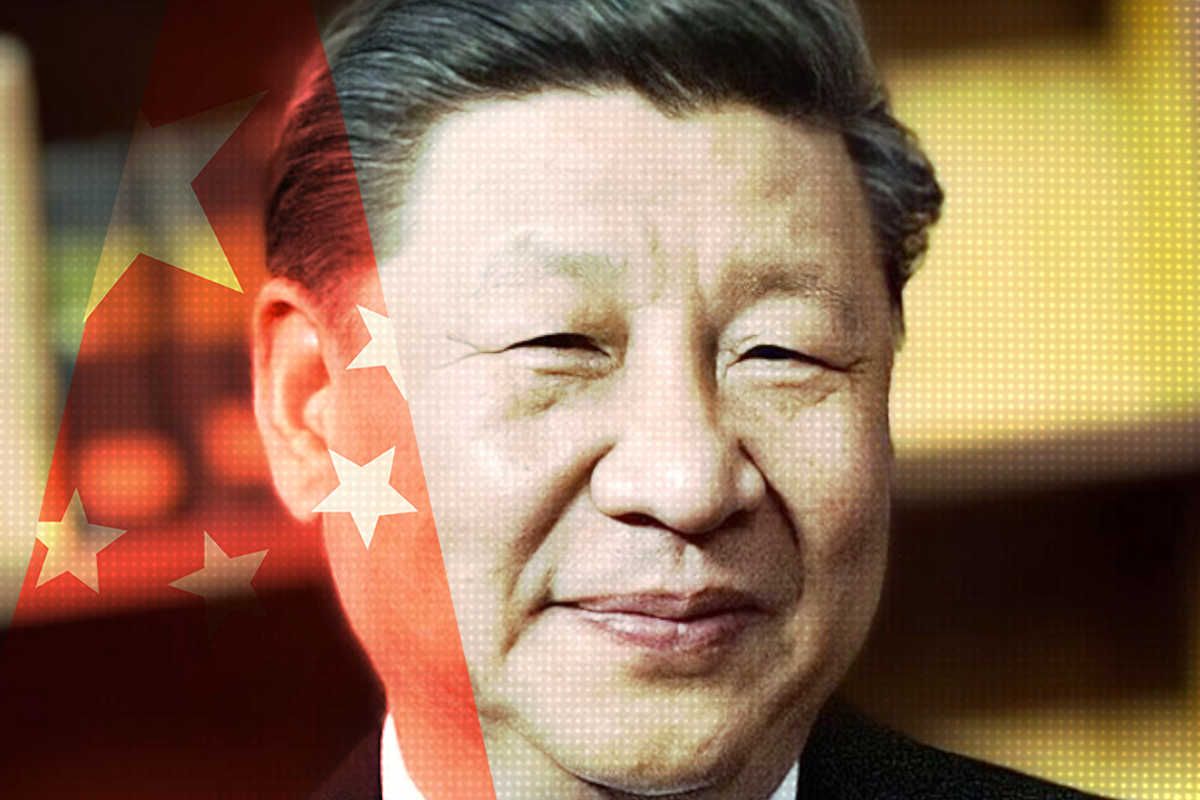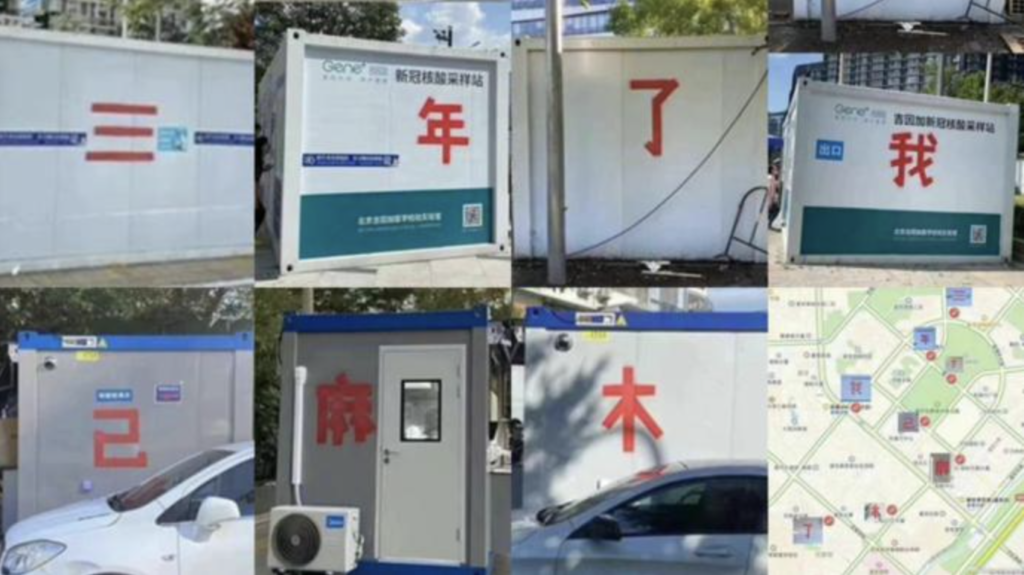Visualizing Power in China’s Press
A growing number of media outlets in recent weeks are bearish on the prospects facing Xi Jinping. The Daily Telegraph reports that “there are signs China’s leader could be in political trouble.” The New York Post claims Xi has been “conspicuously missing from the pages of the People’s Daily.” At the slightly unhinged end of the spectrum, beyond innumerable reports from Indian media outlets, one influencer insists that former president Hu Jintao is now secretly pulling the strings — quietly calculating, like any Capricorn.
Few of these claims offer substance at all. But what can be gleaned from the data on China’s tightly controlled media space?
Last month, looking past the rumors — and ignoring the star signs — we tested the assertion that Xi Jinping has been downplayed in the state media. We found not just that he remains dominant, but that there are no signs of advancement by any member of the Politburo Standing Committee (PSC). This week, stepping back and getting a broader view of Xi’s performance in the party-state media, we extended our study of his visibility in the official People’s Daily to both headlines and images for PSC members, and made calculations for 6+ months in 2023, 2024 and 2025.
Our conclusions are unchanged. We do not see a meaningful shift in party-state messaging on Xi or other members of the top leadership, or other potential rivals out of left field. There is just one interesting caveat, which readers may spot in the graph below plotting front-page headline appearances for PSC members.
While headline appearances for most of the standing committee members have remained more or less the same in 2025 compared to the previous two years, Xi saw a decrease from 2023 to 2025 of 14 percent. That is interesting. But is it significant? Before anyone leaps back onto the rumor wagon, there are two things to note.
First of all, we should understand that while the raw drop in headlines so far this year appears visually substantial, it still represents a 230.4 percent gap with the performance of the next most influential PSC member, Premier Li Qiang (李强). That compares to a 241.5 percent gap in 2024, meaning that even if these numbers are really reflective of performance in the paper, the gap with all competitors (if that is a fair characterization at all) remains commanding.
Looking at the change in the gap between 2023 and 2025, we might also note what seems a substantial drop, from a 306.9 percent gap — Xi’s headlines are 306.9 percent higher than Li Qiang’s, in other words — down to 230.4. Hang on, what’s happening there?
In fact, there is a reasonably simple explanation, which brings us to our second note: The importance of key meetings, including plenary sessions, in driving short-term bursts in headline coverage. This fact impacts our data in a couple of key ways. First, that yawning 2023 to 2025 gap. Let’s recall that the 20th National Congress of the CCP was held December 16-22, 2022, marking a predictable reinvigoration of Xi’s ideological position through to the National People’s Congress the next year and beyond. The 20th congress and its political report (政治报告) naturally drove a wave of Xi headlines into 2023, a wave the February 2023 second plenum drove again. And this almost certainly explains the 2023 bump in our visualization.
On a more near-term basis, the same explanation about meeting-driven headline dominance could explain the gap also between 2024 and 2025 Xi headlines. The dates of the CCP’s fourth plenum, to be held during the second half of this year, are as yet uncertain. Depending on the schedule of important party events, including plenary sessions, we could see our headline data closing or evening out within a matter of weeks. We cannot be certain, in other words, that the 2024-2025 gap is actually a gap.
We will certainly keep an eye on developments.
In any case, the important thing to remember is that fluctuations in data between years are not something new, and in the headline counts Xi continues to eclipse his nearest rival, Premier Li Qiang. It’s also crucial to remember that while People’s Daily data can offer important clues, this is not a political stock market perfectly correlating with power or political sentiment. Switch indicators and this can marginally change the count. We can demonstrate this by trying another measure of leadership presence on the front page — images.
When we count the number of front-page images for Xi Jinping and other PSC members over the same three time segments, we clearly see a close balance between 2023, when Xi was fresh from his election to an unprecedented third term as general secretary, and 2025.
Interestingly, Li Qiang’s front-page image trajectory slightly mirrors that of Xi, with an uptick in 2024. Why? Likely, because both were especially active on the foreign relations front during the second quarter of 2024, with Li holding meetings in Beijing with seven foreign leaders in June alone. In any case, Xi’s commanding lead is evidenced once again.
Context, Cool Context
When apparent signs and shifts occur in China’s political and media landscape, it is always advisable to put observable trends and data points into historical perspective — and maybe, this recent wave of speculation unfortunately suggests, watch fewer Indian news programs.
The speculation over the possible leadership implications of Xi’s decision not to attend the BRICS summit in Brazil is a good case in point. Did this involve, as The Hindu reported, “scaling back his role” in favor of China’s number-two? Hardly. And the headline and image gaps can help us put things into the proper context.
How was Li Qiang’s attendance in Rio covered in the People’s Daily?
Naturally, the event did put the premier in the headlines. When we look at the July 8 edition of the CCP’s top newspaper, however, we can see that his story is relegated to second position, following lead articles under the masthead and in the space to the right (the “newspaper eye”) that deal with technology and Tibet and frontline Xi.
The image used to illustrate Li’s BRICS attendance is noticeably diminished, the premier shown in a Lilliputian line-up with his counterparts in Rio. Compare this to the treatment of Xi Jinping for his BRICS attendance in Russia in October 2024, and the contrast is unmistakable. Xi gets a massive close-up on the front page, directly under the main headline, and also a larger image of the leaders line-up.
Across the summit this year, in fact, Li Qiang merited just three pictures in the People’s Daily. For last year’s BRICS summit, Xi merited nine far more prominent images across three editions of the paper. Had Xi attended this year, we can only assume he would have repeated that performance and topped the headlines. The reason is simple. He, not Li — and not anyone else — commands the country’s messaging.
According to one reading of China’s official media space, there is a fundamental shift in power dynamics now underway entirely beyond the headlines. “The method is familiar,” reported India’s Economic Times late last week, “big names stay on paper, power moves quietly elsewhere.” Anyone who comprehends even the 101 of how crucial media and information are to the mechanics of power in China must recognize the obtuseness of this observation. Power does not bypass the press; it seizes it, because it must. This is one of the most basic lessons of press history under CCP rule.
And what about those rumors that Xi Jinping has lost his grip on the People’s Liberation Army (PLA)? Might it not be possible, given sober analysis on the possible limits of his power in this core institution, that central state media are papering over these cracks? The simple answer, repeating the point above, is “no.” This is not how China’s party-run press operates. If the Central Military Commission, the supreme military leadership body, were not convincingly under Xi’s control, this shift would almost certainly be reflected in the pages of the body’s official newspaper, the PLA Daily (解放军报).
Certainly, the party-run media can seem monolithic. But history cautions that matters are never quite so simple, and gaps can be discerned.
None of this should be taken to suggest, of course, that Xi Jinping is necessarily safe or untouchable. Certainly, there can be hairline cracks or fractures within the leadership. There may even perhaps be divides that Xi and his acolytes are working at this moment to bridge and close. The next party congress is not so far away. Even if Xi is largely uncontested, the question of how to frame and legitimize his leadership beyond 2027 would be a point of potential friction.
Given the nature of CCP politics, we can always assume some level of turbulence behind the stoic headlines. But make no mistake — when power is truly lost, the papers follow.
















